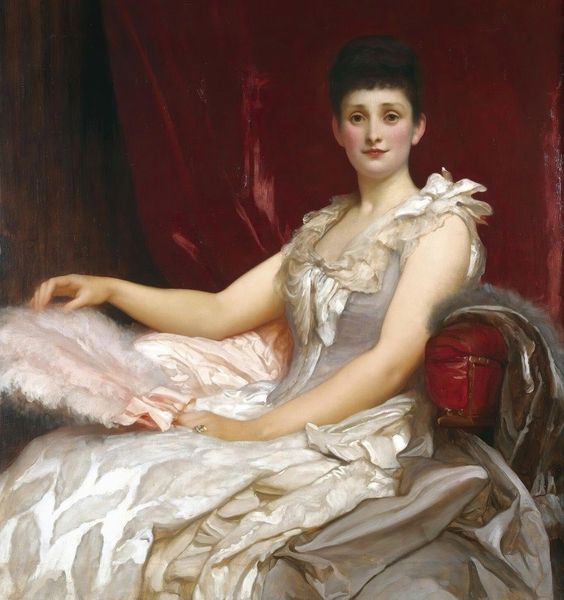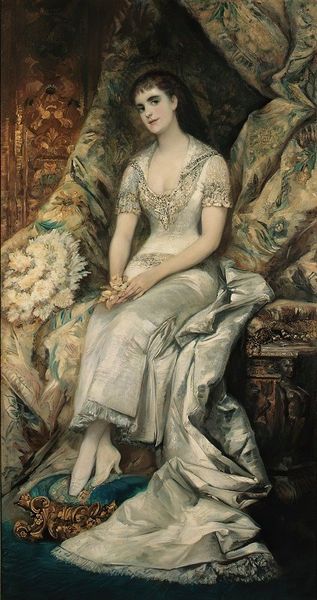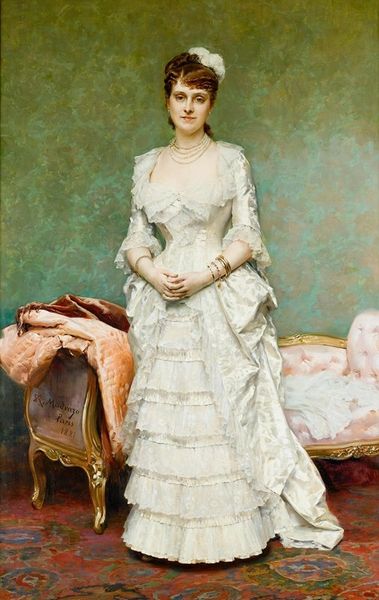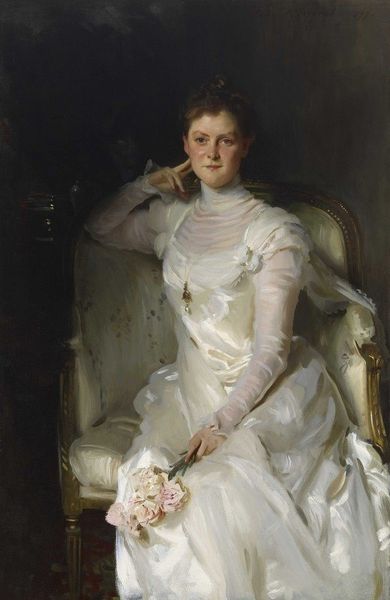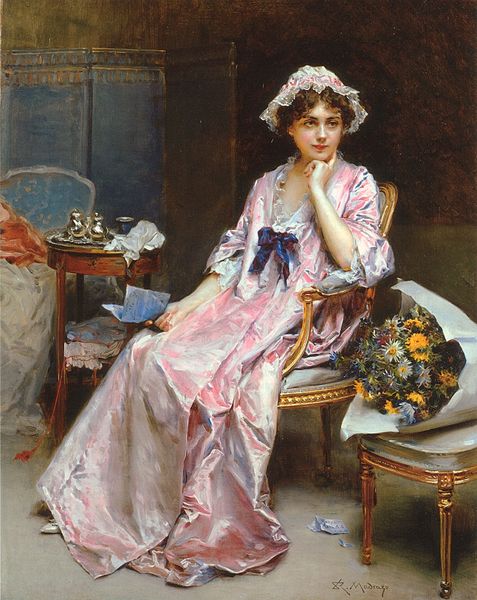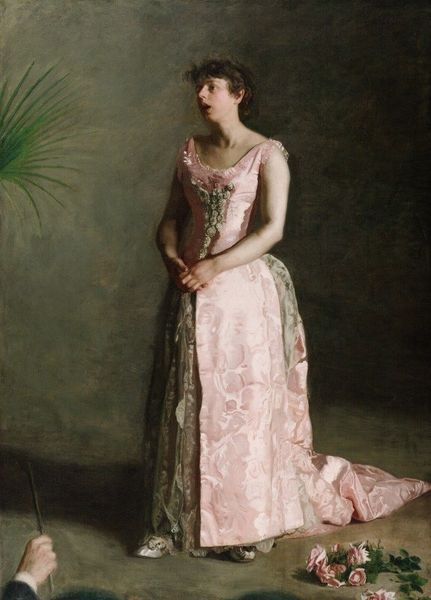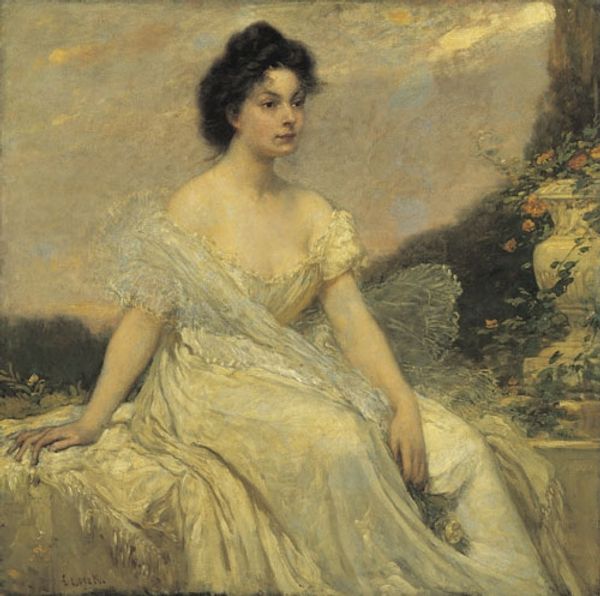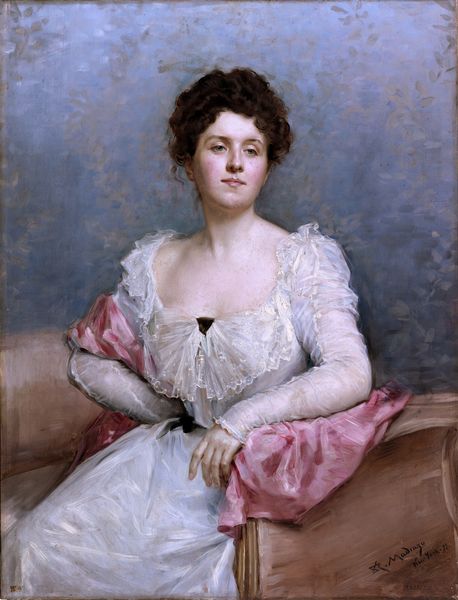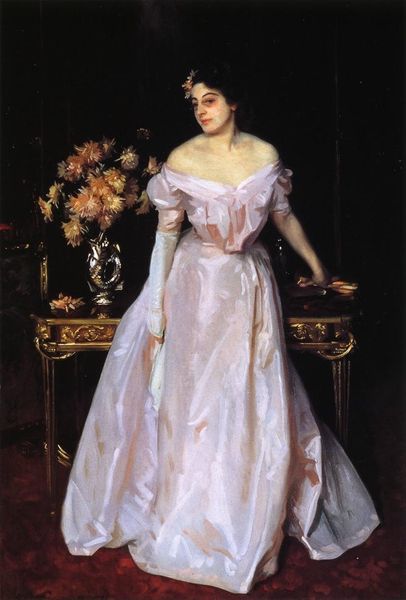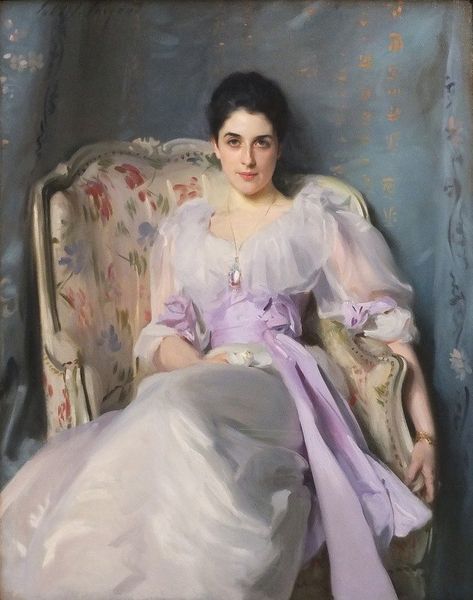
Dimensions: overall: 188.6 x 140.4 cm (74 1/4 x 55 1/4 in.) framed: 204.5 x 156.8 x 8.9 cm (80 1/2 x 61 3/4 x 3 1/2 in.)
Copyright: National Gallery of Art: CC0 1.0
Curator: Irving R. Wiles painted "Miss Julia Marlowe" in 1901, a beautiful example of American Impressionist portraiture executed in oil. Editor: There's an airy grace here, almost ephemeral. The composition seems entirely dictated by curvilinear forms and softened edges; it certainly flatters the sitter! Curator: Note how the light plays across the diaphanous layers of her gown. The subtle color variations are exquisitely rendered. The artist utilizes the language of impressionism without sacrificing representational accuracy. Editor: The rose at her waist, though, feels particularly symbolic. It’s placed centrally, drawing immediate attention. Considering Marlowe was an actress, one wonders if the flower is referencing conventional stage imagery relating to youth and beauty. It is, perhaps, too conveniently positioned, according to period conventions. Curator: I would argue it’s also structurally critical, a visual keystone preventing the composition from becoming too diffused, giving a sense of formal unity and coherence. Editor: Possibly. I’m drawn to how Marlowe, the actress, chose to portray herself. The setting with the plush cushions, that soft light... everything seems calculated to project gentility and cultivated refinement, yet at the same time it presents her as timeless in her romantic idealism. It really reminds me of similar presentations from that period depicting feminine theatrical personas. Curator: It does capture a specific type, the society portrait designed for public consumption. You see how her face emerges from the haziness behind, demanding attention and guiding our observation. Editor: So well observed; a confluence of calculated expression and symbolic cues all anchored in a moment of shifting light and paint. It is, to some extent, performative on both sides of the easel, sitter and painter. Curator: A wonderful dialogue of technique and symbol. The canvas achieves something quite profound; it provides aesthetic delight and an insightful window onto its moment. Editor: Agreed, this really reflects how symbols contribute and connect us through artistic imagination and its power in our collective psyche.
Comments
No comments
Be the first to comment and join the conversation on the ultimate creative platform.
